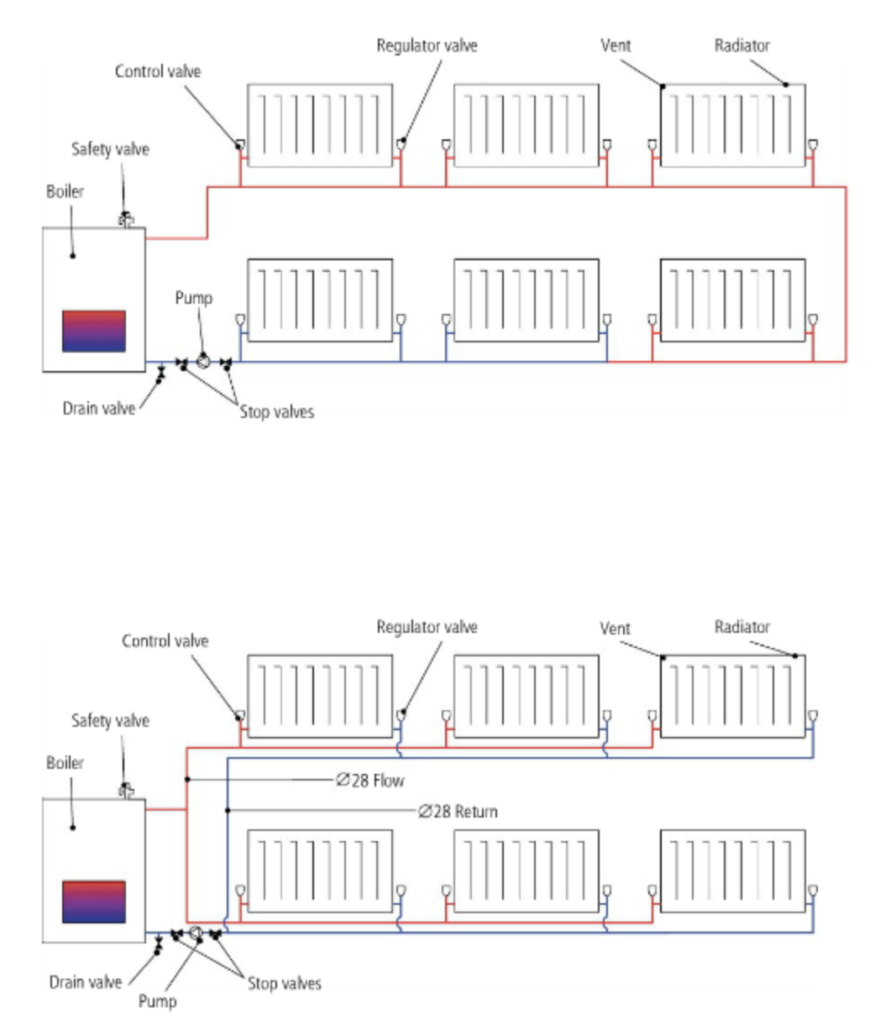We recently completed a full central heating project which included radiator pipe work. In a new build or renovation this is fairly common practice, but this job replaced the existing heating system. This is unusual because replacement central heating jobs can, in the majority of cases, use existing pipe work, providing it is in fit condition. So, why did we do it? Well, The original pipe work ran in a one pipe system and is not suitable for modern sealed systems.
What is a one pipe system?
To answer this we start at the boiler. The water heats up inside and pumped to the radiators. A one pipe system sends the pumped water to each radiator in turn, and returns the water from the last radiator on the run. Early examples of this required much larger bore pipe work at the start of the system to ensure that the last radiators received some heat. This inevitably lead to a very unbalanced system, where the radiators nearest the boiler would be extremely hot and the final radiators on the system tepid at best.
Bypasses
The one pipe system improved with the addition of a bypass on each radiator. Instead of the water running through one radiator to the next, a bypass provides the pumped water with two pathways. With the use of radiator valves, they could balance each radiator, depending on what point of the system it received the hot water. The closer the radiator position to the boiler the greater the restriction setting of the radiator valves. By doing so, it would force more hot water to the farthest radiator before the water lost too much heat. This system worked much better, however there were still drawbacks.
Limitations of the one pipe system
The key issue is heat loss. On a small system this can be minor, especially if all pipe work is insulated and the pipe run doesn’t have many bends in it. But for larger systems this is a one pipes Achilles heel. No matter what you do to reduce heat loss, or improve circulation, a large one pipe system will have excessive temperature differences. This lead to the creation of two pipe systems that we use today.

Two pipe systems
The two pipe system provides each radiator with a flow and return pipe. These tap into larger core central heating flow and return. The radiators use valves to balance them, depending on flow position, ensuring all radiators heat up. The core flow and return pipes are sized depending on how far the water has to travel. All radiators tee off the core pipes in the same size pipe work. Additional features such as zone heating thermostats and thermostatic radiator valves increase the efficiency of these systems.

